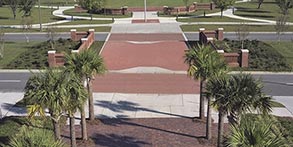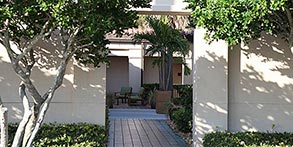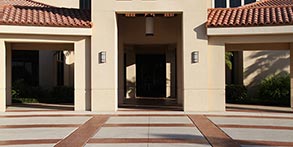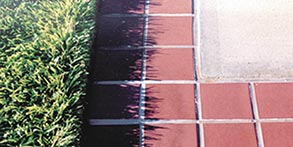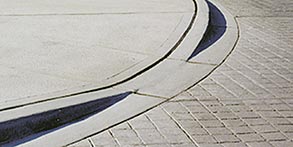- Maintain efficient geometry to connect building entrances to adjacent parking areas and activity areas and to the base transportation system.
- Efficiently use materials to optimize life-cycle costs and to minimize maintenance.
- Mitigate heat island for sidewalk paving with materials approved in the Installation Facilities Standards (IFS); consider an integrated approach that could include stormwater management (permeable surfaces) when appropriate.
- Complement the design of the storm drainage system.
- Install plaza and courtyard paving following IFS.
Encourage walkability and cycling with properly sized and paved sidewalks, paths and trails following Installation Facilities Standards (IFS) for materials, lighting and safety. Create walkable places that are comfortable, convenient, healthy and sustainable; cost effectively redevelop areas, which were originally built around the automobile, to pedestrian oriented areas when functionally appropriate and economically feasible.
Provide an appropriate level of quality for the Facility Group.
Sustainability
Appropriately address heat island effect in the selection of materials following UFC 1-200-02 to improve thermal comfort. Generally use materials with high solar reflectance that maintain lower surface temperature. Minimize environmental impacts.
Resilience
Provide paving surfaces that can withstand documented risks associated with storm events. Consider sidewalks along evacuation routes when designating maintained tree planting areas to minimize potential debris in landscape setbacks.
UFC 1-200-02 High Performance and Sustainable Building Requirements https://www.wbdg.org/dod/ufc/ufc-1-200-02
UFC 2-100-01 Installation Master Planning https://www.wbdg.org/dod/ufc/ufc-2-100-01

